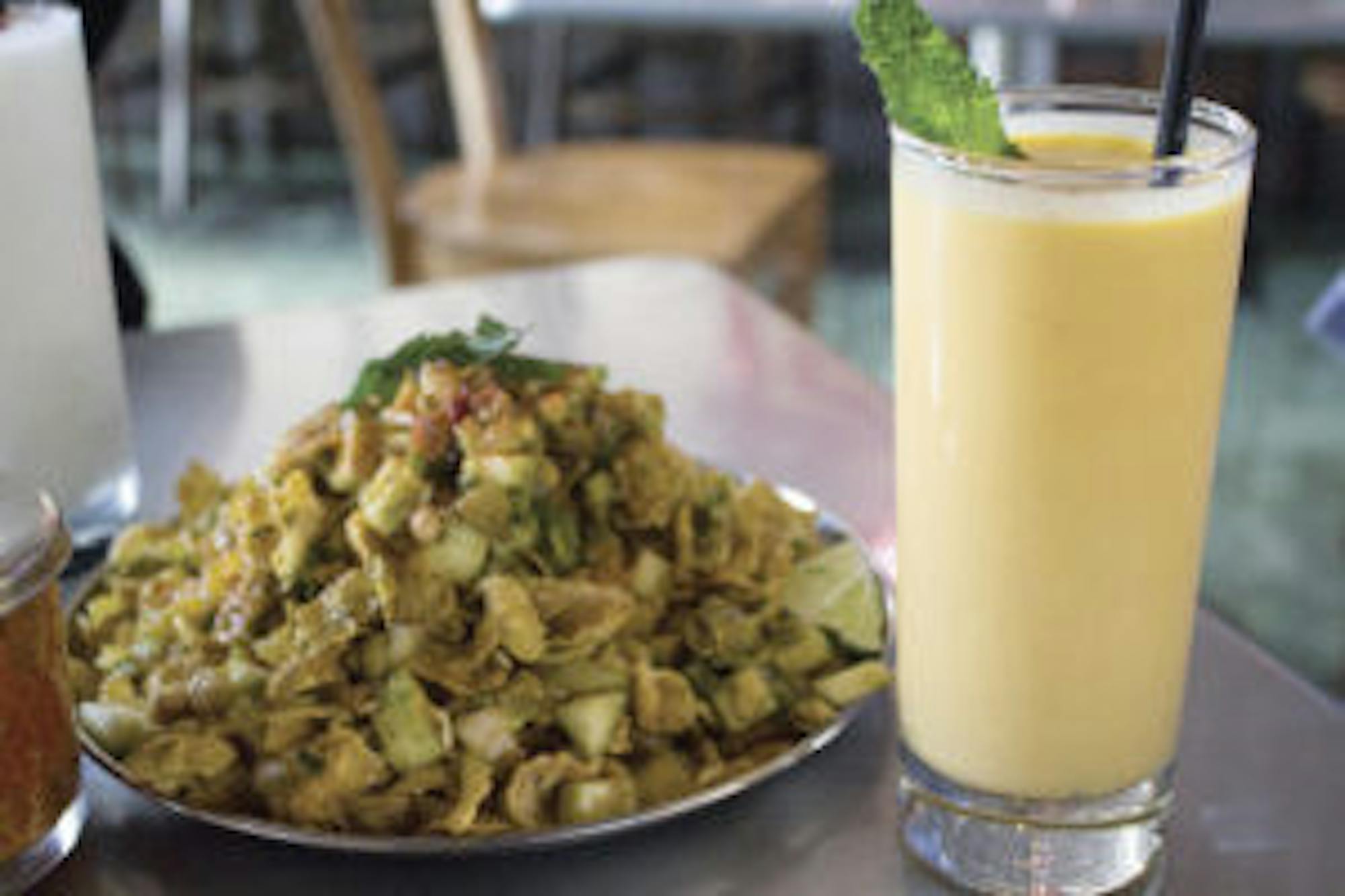
The spicy and sour green mango chaat is texturally rich and moderately spicy, making the sweet thickness of the mango lassi an optimal accompaniment for the dish. | Alisha Compton/Emory Life Editor
I first encountered Chai Pani the day before my father dropped me off for international orientation. Surrounded by the colorful decor reminiscent of 1980s Mumbai and a suitable classic Bollywood soundtrack echoing in the background, the venue seemed like the ideal place for me to realize my newfound independence. The atmosphere reminded me of my yearly visits to India from my home country of the United Arab Emirates, those precious months each year in which I could remind myself of my heritage. Chai Pani was the perfect place to bid farewell to my father while addressing another question: would my new lifestyle in the U.S. mark the end of my Indian identity? With this question on my mind, I was not able to truly appreciate the food, but craved the safe comfort of silence as I appreciated these moments with my father.This weekend, I revisited Chai Pani. I ordered at the counter, greeted by the rustic charm of the sitar on Runa Laila’s “Dama Dam Mast Qalandar” from the speakers. After placing my order, I sat down at a nearby table. The aroma of pungent spices brought back memories of sitting in my grandmother’s kitchen in Bangalore waiting for a meal. Wishing to make the most of my rare excursion off campus, I ordered the green mango chaat (a savory snack containing onions, cilantro, dried fruit, and savory puffs called poha) and a plate of the vada pav (“spicy potato dumplings fried in curried chickpea batter topped with green and tamarind chutneys,” according to the menu). The mango chaat arrived within a minute of my sitting down. A mosaic of mostly brown corn poha (comparable to cornflakes) and bright green slices of mango, the chaat also contained hearty portions of cilantro and onions with green chutney drizzled on top. Impressed by the authentic details, from the pattern of the chutney drizzle to the stainless steel plate, I was excited to take a bite and end my palate’s DUC-imposed boredom.The dish was incredibly crunchy, from the satisfying snapping of poha to the pleasing cracking of peanuts. Taking a bite instantly brought back memories of walking through the street of Vishweshpura in Bangalore, aka “food street”, where I visited over the summer. Even as it struck the perfect balance between Indian spices and chutney, the addition of the rather unorthodox mango truly elevated this dish to divine levels, as the acidity of the fruit perfectly contrasted with the intensity of the spices. I was blown away; for the first time in months I found Indian food that perfectly highlighted the panache of authentic cuisine with an innovation that allowed the dish to truly distinguish itself. The vada pav arrived at my table within ten minutes. Sizzling hot, the crunchy exterior of the potato was in a heavenly textural equilibrium with its soft interior. The intensity of the spices, while not overwhelming, softly embraced the slight sweetness of the bun and produced a dish that was just as tasty as its Mumbai counterpart,though far more accessible to a Western palate. Of course, if it was ever too spicy, the cool satisfaction of the well-seasoned sweet lassi I ordered proved to be the perfect remedy.Each dish ordered exhibited the ideal yin-yang of authenticity and uniqueness. From the rich, creaminess of the butter chicken to the steaming comfort of the cheese and tomato uttapam, Chai Pani provided me with not only gastronomic comfort but also a relief from all the stress I had struggled through since I was last there with my father. Though I may be thousands of miles away from India and my personality may have changed, I am no less of an Indian than before. Just like the chunks of green mango interspersed between the layers of spicy poha, the end product not only celebrates its Indian roots but also champions its Western influence.





